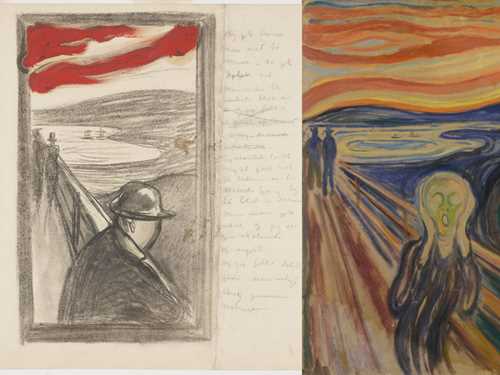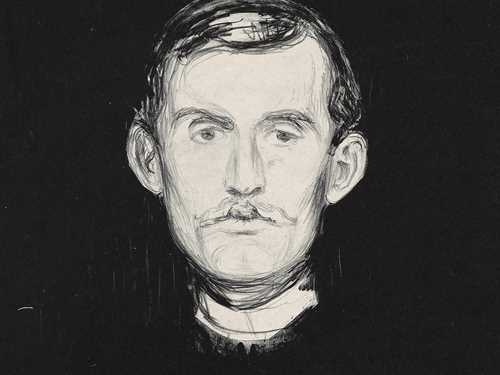Arif's journey explained
What's the story told in Arif at MUNCH? And what does this have to do with Edvard Munch? We guide you through the immersive experience.
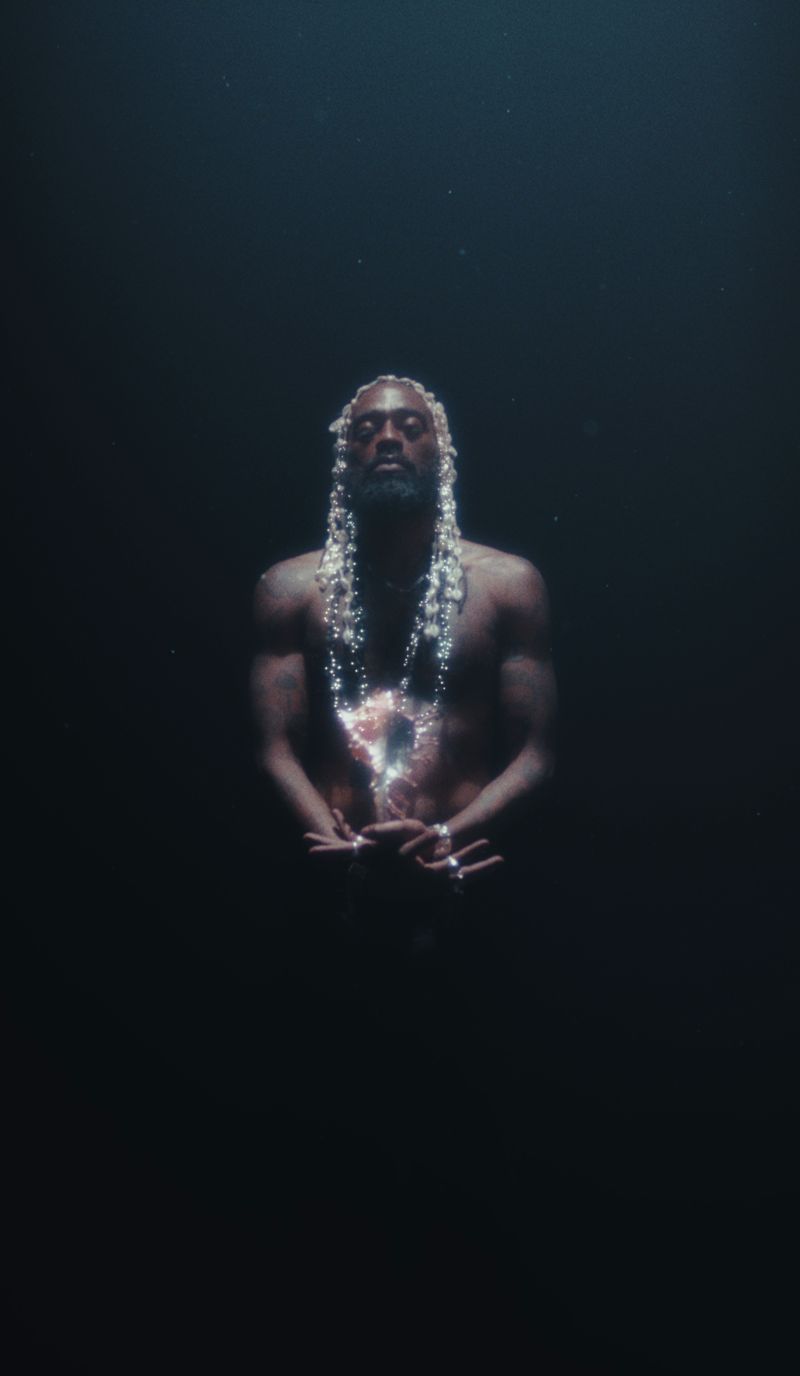
As you enter the space, you come face to face with a large portrait of Arif’s spirit, floating in water and holding a glowing shell. The shell symbol is based on a personal story: Arif’s mother used to bring him seashells from the East African island of Zanzibar, her place of origin, when he was a child. As Andrew Thomas Huang, who developed the narrative, explains:
‘The seashell is a portal that bridges time and space, a timekeeper that connects the past, present and future through spiraled layers of growth over a lifetime, like the rings of a tree. As a vessel connected to the sea that washes ashore, the seashell connects continents. As a divine artifact that symbolizes cosmic eternity, the seashell becomes the symbol to encapsulate Arif’s journey into the infinite.’
Arif’s seashell spirit is paired with a reproduction of Edvard Munch’s image Blossom of Pain and the following quote:
‘I do not believe in art which has not been forced into being by someone’s need to open their heart
All art from literature to music must be created
with one’s lifeblood – Art is one’s lifeblood’
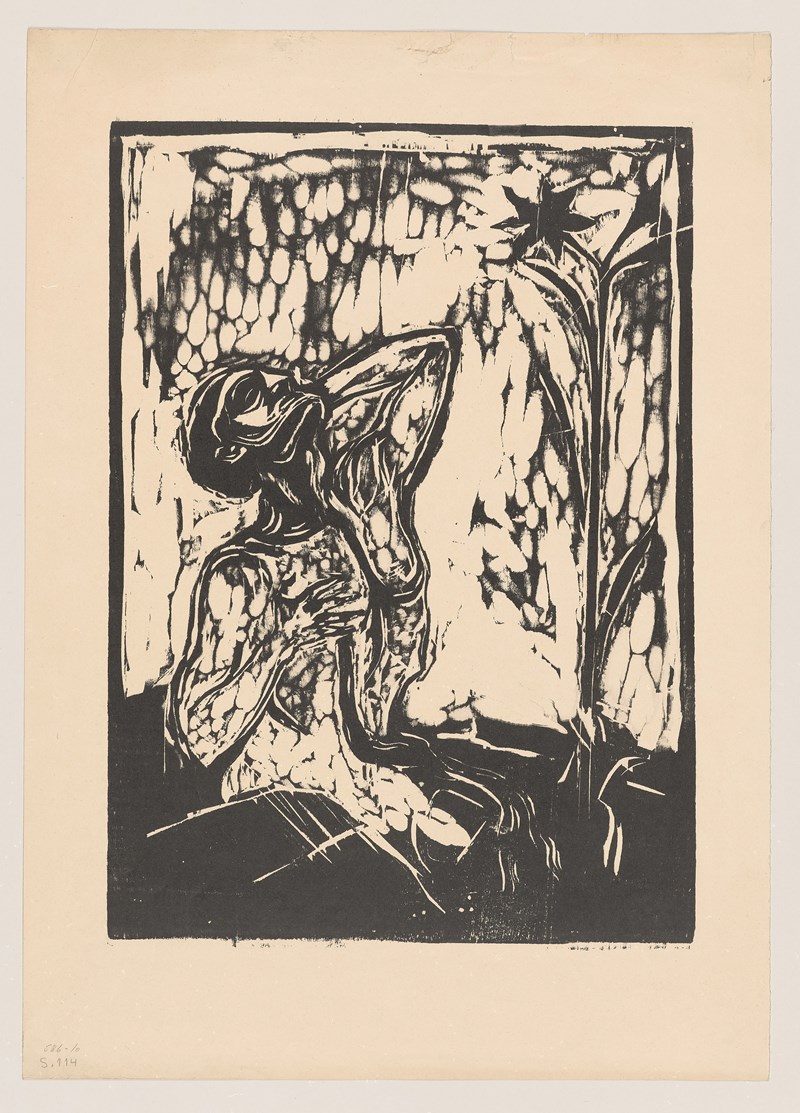
The image, and Munch’s words, point to the artist’s role in expressing deep feelings, making himself open and vulnerable. The relation between the man’s heart and blood and the flower also points towards Munch’s belief that everything – humans, nature, the spiritual sphere and the universe – is connected through eternal energies and lifecycles. Arif’s shell is also inspired by these ideas from Munch.
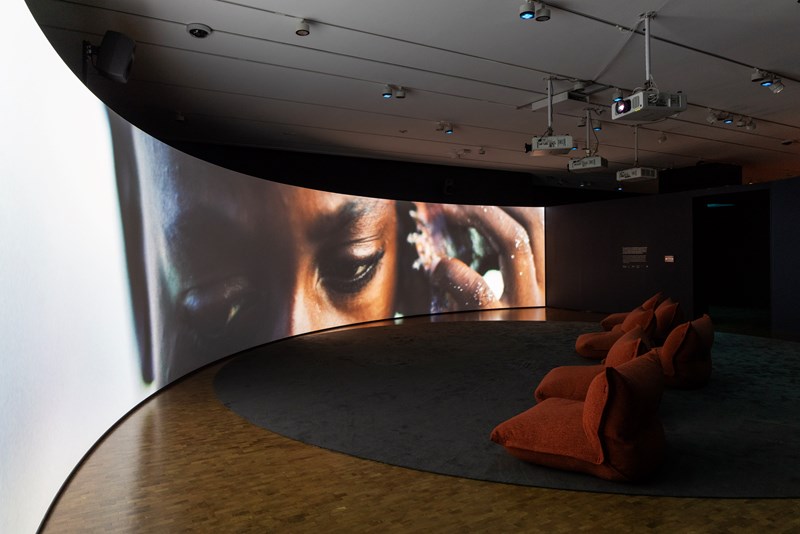
The film created by British director Wukda takes you on a journey with Arif in search of his personal and artistic identity. The film emphasises three emotions – joy, pain and hope – alluding to Munch’s artistic interest in expressing feelings and shifting emotional states.
It starts with Arif and his friends in a bar in Oslo. Despite being surrounded by others, Arif feels isolated and alone. The scene leans heavily on Munch’s various depictions of parties and social gatherings, such as The Wedding of the Bohemian.

Picking up the phone, Arif is teleported to another space and time, where Arif as a child in Zanzibar answers the call by holding a shell to his ear. The following beach scene with children playing draws inspiration from Munch's sunny, energetic paintings of bathers.
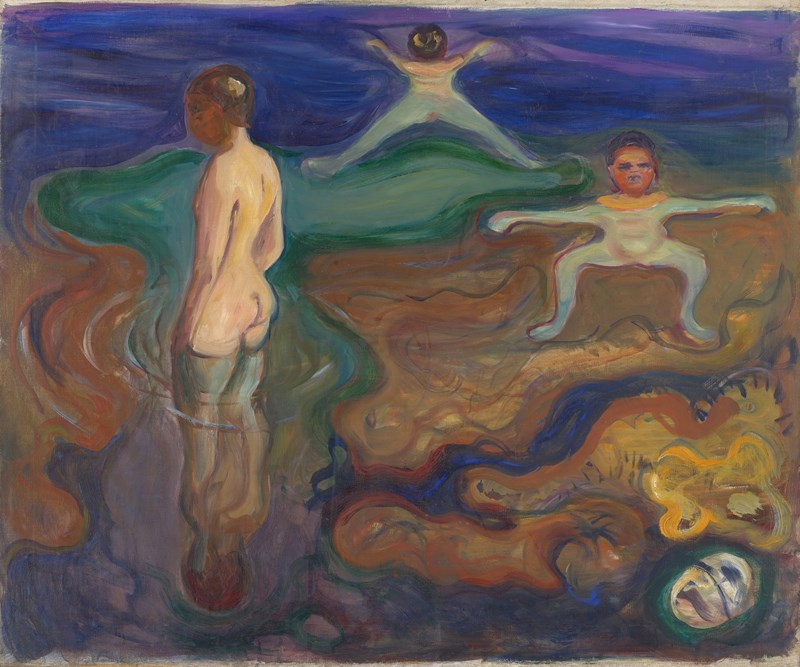
A dive into the sea transforms the child into adult Arif sinking into darkness. He arrives in a void space – perhaps a symbol of his inner self. He starts writing, exploring his craft and finding his own voice. This mirrors the many hours Arif, an only child, spent in his room, retreating into his fantasy world.

Finally, Arif starts rapping, expressing his grief over a lost friend, a reference to the death of Norwegian rapper Dutty Dior who died in 2024 aged 27. From this lone performance, the scene shifts to Arif on a concert stage, sharing his art with fans. Yet, during his performance, Arif increasingly loses his sense of reality. The concert collapses into a funeral scene where Arif finds himself lying in a coffin on the beach. There is a parallel here with an image of a coffin found in a strange book produced by Munch called The Tree of Knowledge.
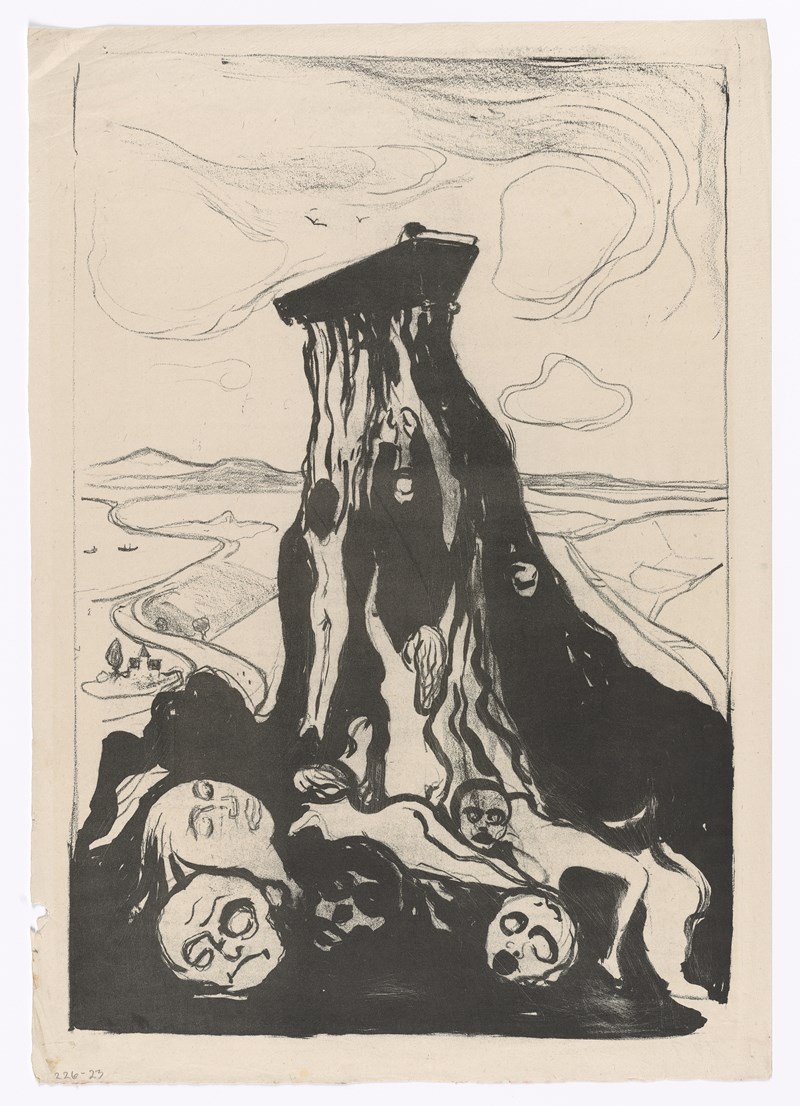
This ‘funeral’ scene is intercut with Arif dancing with a deathly figure, similar to Munch’s motif Death and the Woman (see below). At the last second, Arif escapes death and is suddenly wide awake. The universe opens up and ancestral spirits lead Arif to himself, and back to Zanzibar. His ancestral journey ends with a scene of harmony. Arif is surrounded by loved ones. His grandma braids his hair. He is at peace with himself.

Through the shell, we return to Oslo, back to the bar where we began, with Arif and friends. The final shot shows Arif’s floating spirit, crowned and triumphant.
On the wall in the exhibition space where the film is screened, you can see a reproduction of Munch’s Death and the Woman and the following quote:
‘Everything is motion and light ...
Even in the hardest stone the flame of life blazes …
Death is life’s love, grief is joy’s companion’
Both image and quote relate to the way Munch thought about everything being connected, and the endless cycles of death and rebirth.
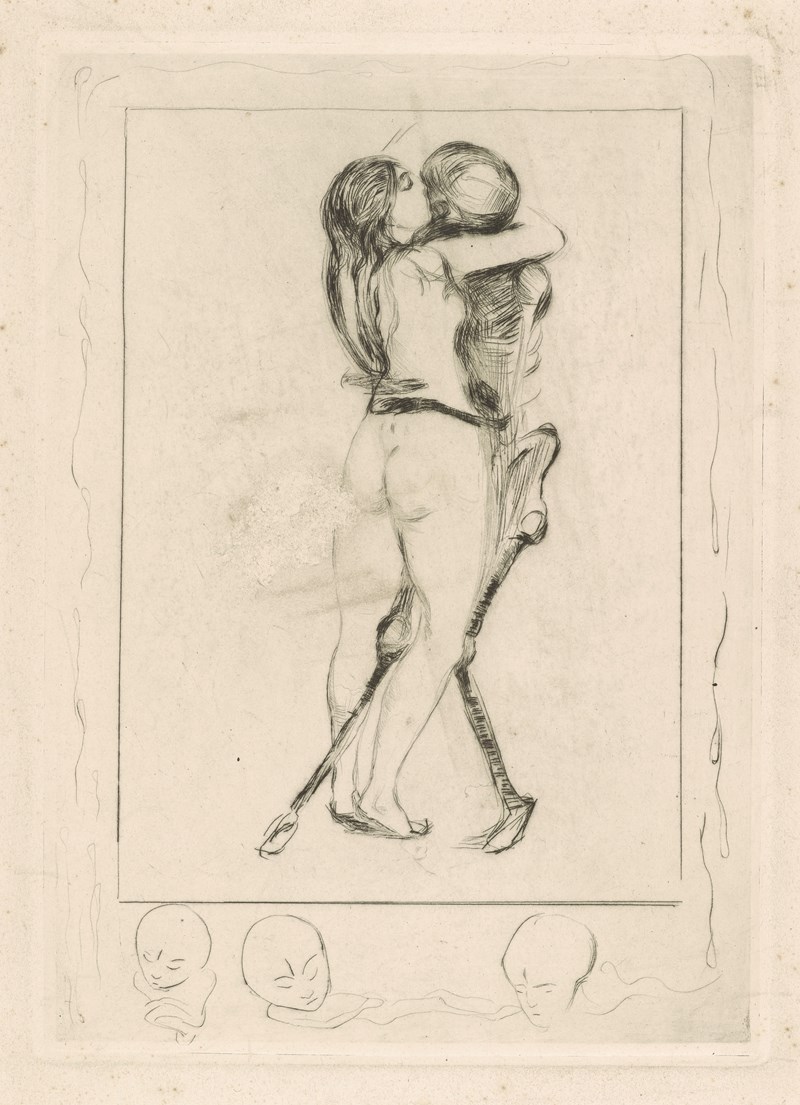
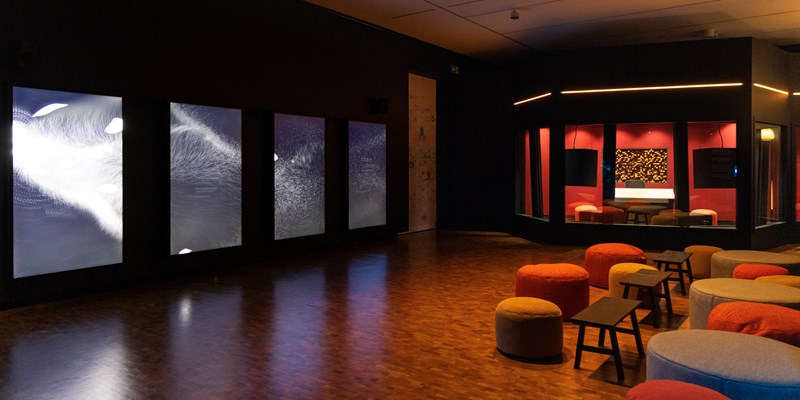
The other main room in the Arif at MUNCH experience is dedicated to community and bringing people together. This picks up from Arif’s journey in the film, from isolated creativity to connecting with his loved ones. The inclusion of a music studio in this space results from Arif’s desire to share his art and creativity with others. Even though he cannot see or hear you from inside the studio, he lovingly creates music for everyone who comes to visit. Like Arif, Munch also made his art with an open heart and a generous spirit towards society. This is reflected in the Munch self-portrait and quote on the wall next to the studio:
‘In my art I have tried to explain to myself life and its meaning –
I have also tried to help others to understand their own lives’

On the four interactive screens in this room, some of Arif’s lyrics from the music in the film are lying on the ocean bed, inviting you to dive in and retrieve them. An exciting programme of events will also be happening here over the entire exhibition period, making the Community Space a meeting point for Oslo’s diverse cultural scenes.
Check out all the events here. See anything you like? We’d love to welcome you at the museum.

